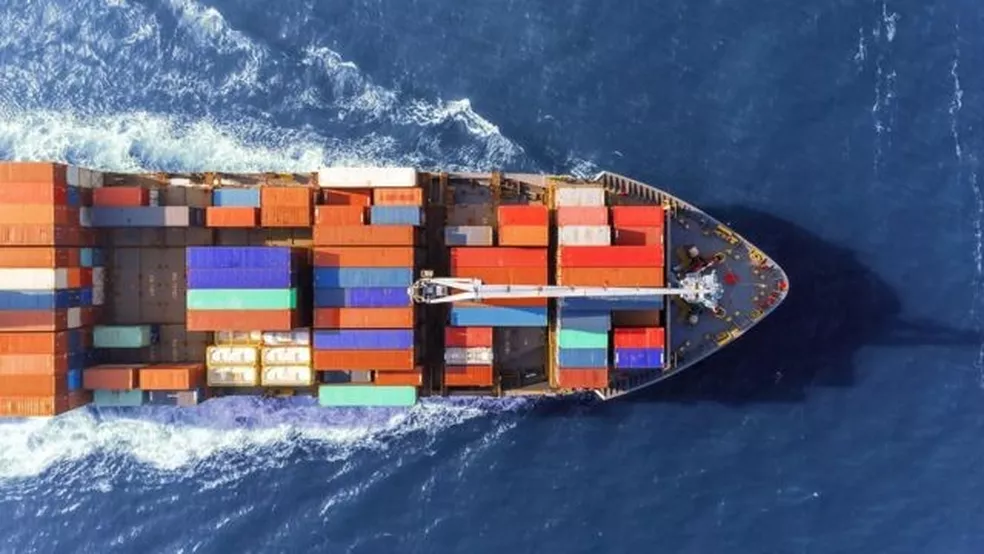
ANTAQ: Containerized Cargo Movement Shows Second Consecutive Month of Growth
Apr, 11, 2024 Posted by Gabriel MalheirosWeek 202416
In February of this year, the Brazilian port sector witnessed a remarkable growth of 11.44%, according to data from the National Waterway Transportation Agency (ANTAQ). This surge was primarily driven by containerized cargo, with solid and liquid bulk cargo also showing substantial increases.
Throughout the month, a total of 99.83 million tons of cargo were handled. In comparison, the movement during the same period in 2023 had reached 89.58 million tons. Noteworthy among the commodities were iron ore (+17.85%), petroleum and derivatives (+16.23%), and soybeans (+19.70%).
Containerized cargo saw a significant boost, reaching 11.2 million tons, marking a 29.19% increase compared to the same period last year. This figure translates to 1 million TEUs, with a 24.5% growth in February 2024. Of this volume, 7.7 million tons were transported on long-haul routes, while 3.4 million were moved via cabotage.
Resurgence in Container Movement
Analyzing container movement over the past four years indicates a revival in activity.
After experiencing two years of decline and stagnation, container movement is rebounding and surpassing the performance observed in 2021, a year heavily impacted by the pandemic which saw significant containerized cargo transportation.
Cumulatively, January and February of 2024 show an 18% growth in container cabotage compared to 2023. This trend is not isolated, as similar heightened activity is observed across various ports nationwide.
Notable among the commodities with increased movement are cotton, sugar, coffee, and various chemical compounds.
Additional Insights
Solid bulk cargo, constituting 58.1% of total port operations, exhibited an 11.48% growth compared to February 2023. February saw 58 million tons handled, with iron ore and soybeans leading the bulk cargo category.
Liquid bulk cargo also witnessed an uptick, rising by 7.47% compared to February 2023. Conversely, general cargo experienced a 1.53% decline during the month compared to the previous year.
Maritime Traffic
Long-haul cargo movement in February 2024 reached 69.1 million tons, marking a 13.59% increase over the same period last year. This growth was primarily driven by exports, which saw a 15.11% increase, while imports grew by 6.87%.
Following a slight decline in January, cabotage saw an 11.08% increase compared to the same period last year, totaling 23.87 million tons.
Container cabotage, on the other hand, surged by 31.73% compared to February 2023, suggesting a potential return to double-digit growth for the sector in 2024.
However, inland navigation experienced a 5.27% decrease in February, handling 6.68 million tons. Similarly, there was a decline in cargo operations related to port (-9.42%) and maritime (-3.53%) support.
Private Terminals
Private Use Terminals (TUPs) recorded 66.14 million tons in February 2024, marking a 10.89% increase compared to the same period the previous year.
Among the top five TUPs in terms of movement, the Maritime Terminal of Ponta da Madeira (MA) stood out, registering a growth of 14.28% with 10.65 million tons moved.
Public Ports
Public ports handled 33.69 million tons in the second month of 2024, reflecting a 12.55% increase compared to the same period the previous year.
Santos Port saw the most cargo in the month, with 11.11 million tons, showing a remarkable 32.42% increase compared to the same period in 2023. The port accounted for 33% of all public port movements during the month.
Statistical Dashboard
ANTAQ’s Statistical Dashboard, accessible via smartphones and tablets on the Agency’s website, offers comprehensive data on long-haul transportation, cabotage, inland waterways, and container port movement.
-
Other Logistics
Jun, 15, 2022
0
Containers cannot be seized along with goods, decides São Paulo court
-
Port Rankings
Jun, 13, 2019
0
Codesp president presents results of first 100 days of management in 2019
-
Other Logistics
Dec, 27, 2018
0
Brazil and Paraguay agree to build two new frontier bridges
-
Ports and Terminals
Jan, 13, 2021
0
Log-In wins tender to explore area in the Port of Vitória for 6 months

